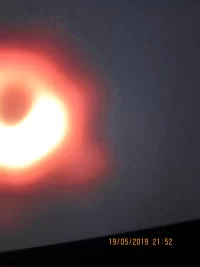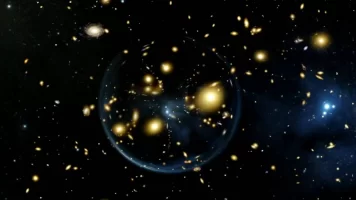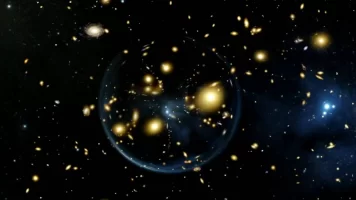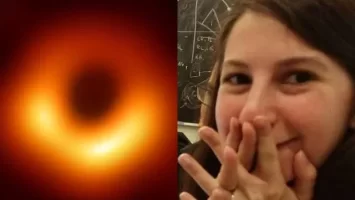We've managed to directly image the event horizon around a black hole, using a planetary network (with one part here in Arizona) of radio dishes.
While you may have heard the term in pop culture, let's make sure our definitions are straight. The event horizon is the boundary between two regions of space-time, typically associated with a black hole. "Inside" the event horizon, space-time is so warped, due to the massive gravitational field of the black hole, that the escape velocity is greater than that of light. Outside, the escape velocity is quite high, but less than that of light, so matter and energy can eventually escape.
As dust and debris fall into the black hole, it accelerates. Charged particles radiate light as they accelerate, and this results in the presence of a bright disk around the event horizon.
This is precisely what we have imaged for the first time in history. A bright disk of infalling matter around the supermassive black hole at the center of M87.
https://phys.org/news/2019-04-astronomers-unveil-photo-black-hole.html
While you may have heard the term in pop culture, let's make sure our definitions are straight. The event horizon is the boundary between two regions of space-time, typically associated with a black hole. "Inside" the event horizon, space-time is so warped, due to the massive gravitational field of the black hole, that the escape velocity is greater than that of light. Outside, the escape velocity is quite high, but less than that of light, so matter and energy can eventually escape.
As dust and debris fall into the black hole, it accelerates. Charged particles radiate light as they accelerate, and this results in the presence of a bright disk around the event horizon.
This is precisely what we have imaged for the first time in history. A bright disk of infalling matter around the supermassive black hole at the center of M87.
https://phys.org/news/2019-04-astronomers-unveil-photo-black-hole.html
Dislike ads? Become a Fastlane member:
Subscribe today and surround yourself with winners and millionaire mentors, not those broke friends who only want to drink beer and play video games. :-)
Membership Required: Upgrade to Expose Nearly 1,000,000 Posts
Ready to Unleash the Millionaire Entrepreneur in You?
Become a member of the Fastlane Forum, the private community founded by best-selling author and multi-millionaire entrepreneur MJ DeMarco. Since 2007, MJ DeMarco has poured his heart and soul into the Fastlane Forum, helping entrepreneurs reclaim their time, win their financial freedom, and live their best life.
With more than 39,000 posts packed with insights, strategies, and advice, you’re not just a member—you’re stepping into MJ’s inner-circle, a place where you’ll never be left alone.
Become a member and gain immediate access to...
- Active Community: Ever join a community only to find it DEAD? Not at Fastlane! As you can see from our home page, life-changing content is posted dozens of times daily.
- Exclusive Insights: Direct access to MJ DeMarco’s daily contributions and wisdom.
- Powerful Networking Opportunities: Connect with a diverse group of successful entrepreneurs who can offer mentorship, collaboration, and opportunities.
- Proven Strategies: Learn from the best in the business, with actionable advice and strategies that can accelerate your success.
"You are the average of the five people you surround yourself with the most..."
Who are you surrounding yourself with? Surround yourself with millionaire success. Join Fastlane today!
Join Today







